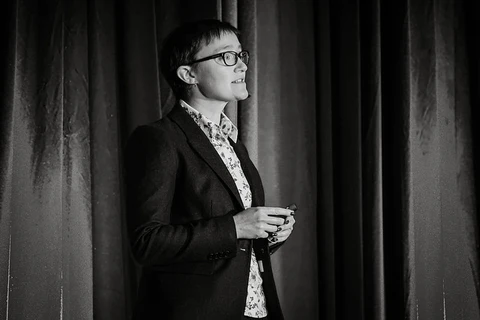Get to Know Rachel Andrew
Jan 14, 2018

Up next our Meet the Authors series, Rachel Andrew with some advice on getting started in design and development.

Photograph by Jeffrey Zeldman
ABA: In your opinion, what should someone consider before starting out in the development/design field?
Rachel Andrew: Learn HTML, CSS and basic JavaScript. Before you touch a framework or a preprocessor make sure that you can build a simple website using the basic tools of the trade. You might think you are taking a shortcut by using some abstraction on top of these, and you can get a long way by doing that. However ultimately you’ll be constantly confused by what is really happening and also unable to transfer your skills easily when your framework of choice is no longer useful.
ABA: Is there anyone you’re following the work of right now, that you’d recommend others pay attention to?
RA: There is an army of amazing technical CSS and JavaScript developers, writers and speakers out there right now who just all happen to be women. I learn something from these people every day: Sara Soueidan, Léonie Watson, Ire Aderinokun, Elika J. Etemad, Lea Verou, Jen Simmons, Una Kravets, Val Head, Rachel Nabors, Sarah Drasner, Ana Tudor, Anna Debenham, Ruth John, Chen Hui Jing, Amelia Bellamy-Royds, Marcy Sutton, and Mina Markham. Writing lists inevitably results in missing someone. However, if you follow these women and the things they tweet and write about, you are likely to encounter even more people who are doing great things.
ABA: What tool, object, or ritual could you not live without to get you through a week?
RA: It would be very easy for me to spend my entire life sat in front of a computer, as I find what I do so endlessly interesting. However that is not good for the body or mind! So I alternate sitting and thinking hard in front of a screen with running around the local area - or the city I’m visiting for a conference. I get into the gym, I cycle and swim and enjoy pushing myself physically.
I find that very often I can be at the computer struggling with a problem for hours, go out for a run and while I’m out there the solution just pops into my head. There is something about movement and fresh air that gives my brain time to work around things from a different angle.
ABA: What do you think has pushed you to write so many books!?
RA: I think by writing, so I end up with a lot of words. It would be sad for so many words to end up homeless so they end up in books, in articles and blog posts.
I also enjoy being able to share and explain the things I’ve learned to other people. It is lovely when someone tells me how a book I wrote ten years ago was the thing that helped them really understand CSS, for example. As a developer and as an author I stand on the shoulders of all of the people who I’ve learned from. I’m just passing that on.
ABA: In moments of self-doubt, how do you recharge and rally to keep going?
RA: I just do the work. At that point one of two things will happen. Either I was correct to doubt myself and in doing the work gaps in my knowledge will open up. I can then learn more or recruit in some help from someone who knows more than me. Or, I’ll discover I know a lot more or am far more capable than I thought. The second happens more than you would imagine unless you are someone prone to taking on tasks totally outside of your skillset, and when the first happens - it’s ok! You get the chance to learn something new, or to work with someone else.
ABA: Is there a fear or professional challenge that keeps you up at night? What is it?
RA: I’m not sure I would class it as keeping me up at night but I do wonder how a person, in the position I was in when I entered the industry, makes a start today. It’s one reason why I focus on creating materials for people who are beginners to a subject, in a way that doesn’t assume knowledge of a huge stack of technology. Our industry has matured, we’re developing things of far more consequence than we were 20 years ago. That brings with it more complexity, more tooling, and the appearance of needing to know a huge amount of things just to make a start. I hope that we can maintain straightforward and clear pathways to understanding the web, and how to build things for the web, as we continue to push the boundaries of what is possible here.
